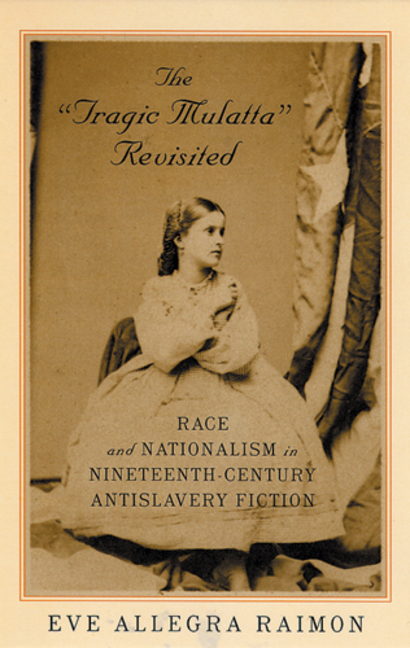Harriet Wilson’s New England: Race, Writing, and RegionPosted in Anthologies, Books, History, Literary/Artistic Criticism, Media Archive, Slavery, United States, Women on 2009-11-03 22:31Z by Steven |
Harriet Wilson’s New England: Race, Writing, and Region
University of New Hampshire Press
University Press of New England
2007
272 pp. 18 B&W illus., 4 appendixes 6 x 9″
Paper ISBN: 978-1-58465-642-5
Cloth ISBN: 978-1-58465-641-8
Edited by
JerriAnne Boggis, Director
Harriet Wilson Project
Eve Allegra Raimon, Associate Professor of Arts and Humanities
University of Southern Maine
Barbara A. White, Professor Emerita of Women’s Studies
University of New Hampshire
Forward by
Henry Louis Gates, Jr., W. E. B. Dubois Professor of the Humanities
Harvard University
This volume, with a foreword by Henry Louis Gates, Jr., advances efforts to correct the historical record about the racial complexity and richness characteristic of rural New England’s past.
In the mid-nineteenth century, Harriet E. Wilson, an enterprising woman of mixed racial heritage, wrote an autobiographical novel describing the abuse and servitude endured by a young black girl in the supposedly free North. Originally published in Boston in 1859 and “lost” until its 1983 republication by noted scholar Henry Louis Gates, Jr., Our Nig; or Sketches from the Life of a Free Black, is generally considered the first work of fiction written by an African American woman published in the United States.
With this collection, the first devoted entirely to Wilson and her novel, the editors have compiled essays that seek to understand Wilson within New England and New England as it might have appeared to Wilson and her contemporaries. The contributors include prominent historians, literary critics, psychologists, librarians, and diversity activists. Harriet Wilson’s New England joins other critical works in the emerging field known as the New Regionalism in resurrecting historically hidden ethnic communities in rural New England and exploring their erasure from public memory. It offers new literary and historical interpretations of Our Nig and responds to renewed interest in Wilson’s dramatic account of servitude and racial discrimination in the North.
Table of Contents
- Foreword – Henry Louis Gates, Jr.
- Acknowledgments
- Introduction: Making Space for Harriet E. Wilson
- NEW HAMPSHIRE’S “SHADOWS”: CONTEXT AND HISTORY
- Of Bottles and Books: Reconsidering the Readers of Harriet Wilson’s “Our Nig” – Eric Gardner
- Harriet Wilson’s Mentors: The Walkers of Worcester – Barbara A. White
- George and Timothy Blanchard: Surviving and Thriving in Nineteenth-Century Milford – Reginald H. Pitts
- “As Soon as I Saw My Sable Brother, I Felt More at Home”: Sampson Battis, Harriet Wilson, and New Hampshire Town History – David H. Watters
- New Hampshire Forgot: African Americans in a Community by the Sea – Valerie Cunningham
- READING “SKETCHES FROM THE LIFE OF A FREE BLACK”: GENRE AND GENDER
- Slavery’s Shadows: Narrative Chiaroscuro and “Our Nig” – Mary Louise Kete
- Recovered Autobiographies and the Marketplace: “Our Nig’s” Generic Genealogies and Harriet Wilson’s Entrepreneurial Enterprise – P. Gabrielle Foreman
- The Disorderly Girl in Harriet E. Wilson’s “Our Nig” – Lisa E. Green
- Beyond the Page: Rape and the Failure of Genre – Cassandra Jackson
- Miss Marsh’s Uncommon School Reform – Eve Allegra Raimon
- Fairy Tales and “Our Nig”: Feminist Approaches to Teaching Harriet Wilson’s Novel – Helen Frink
- “A FAITHFUL BAND OF SUPPORTERS AND DEFENDERS”: PERSONAL REFLECTIONS
- Losing Equilibrium: Harriet E. Wilson, Frado, and Me – John Ernest
- Discovering Harriet Wilson in My Own Backyard – William Allen
- A Conversation with Tami Sanders – Gloria Henry
- Not Somewhere Else, But Here – JerriAnne Boggis
- Contributors
- Index

